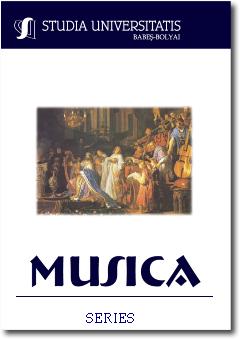DIE UNTERSUCHUNG DER WERTE RELIGIOSO UND LUGUBRE IN DEN KLAVIERWERKEN AUX CYPRÈS DE LA VILLA D’ESTE – THRÉNODIE I., II. ...
THE INVESTIGATION OF THE VALUES RELIGIOSO AND LUGUBRE IN THE PIANO WORKS AUX CYPRÈS DE LA VILLA D’ESTE – THRÉNODIE I., II. ...
Author(s): Miklós FeketeSubject(s): Music
Published by: Studia Universitatis Babes-Bolyai
Keywords: Franz Liszt; piano works; Années de Pèlerinage; Troisième Année; musical analysis; aesthetic values; lugubre; religioso.
Summary/Abstract: The atmosphere of the late works (composed between 1877–1885) changes more and more, the eroico, patetico and amoroso character almost disappears, while the ethical and aesthetic values of lugubre, religioso and macabre-obstiné get emphasized. This paper intends to point upon the first two mentioned values through the analysis of three piano pieces from the cycle Années de Pèlerinage. Troisième Année. Liszt finds for his new spiritual experiences new genres, one of which would be the funeral piece (such as the two threnodies of the cycle). In the composition Sursum corda, Liszt tries, probably for the last time, – through the huge metaphor of the fight for the birth of the melody – to succeed the ascension. The musical analysis proposes to identify and exemplify a few of lisztian procedures, compositional techniques and means of expression, which – on the one hand – do define the structure, the melodic and harmonic aspects of the musical discourse, and – on the other hand – aim to express feelings, and through these certain aesthetic and ethical values.
Journal: Studia Universitatis Babes-Bolyai - Musica
- Issue Year: 57/2012
- Issue No: 2
- Page Range: 51-73
- Page Count: 23
- Language: German

